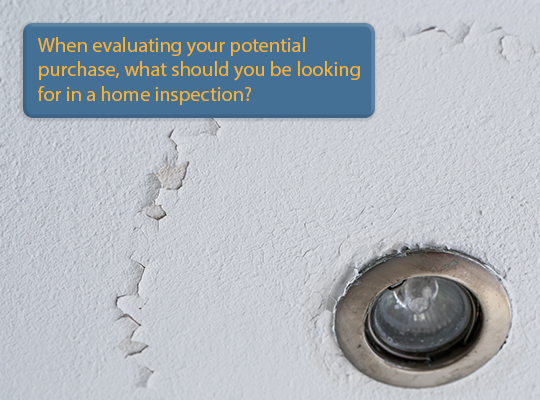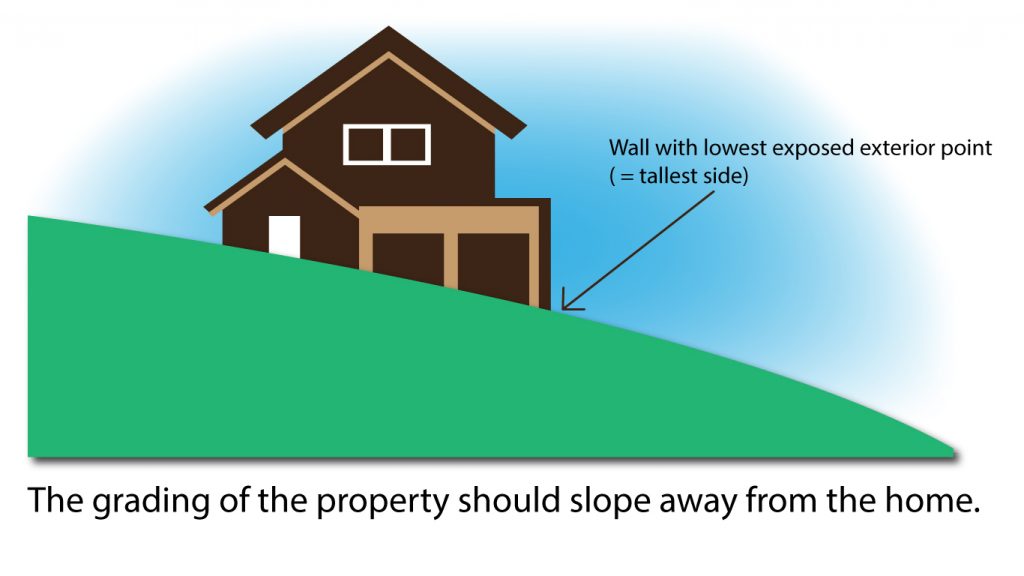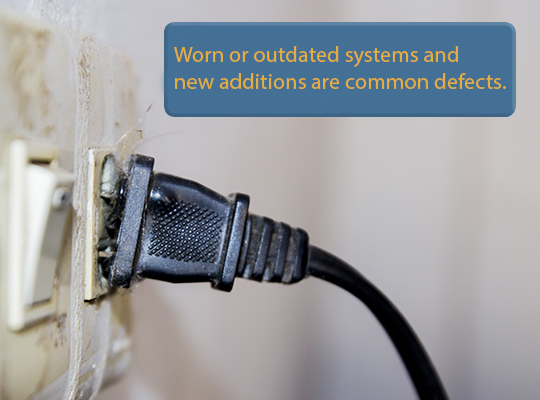When evaluating your potential purchase, what should you be looking for in a home inspection?
Buying a house is a large investment. An important step in this purchase is having the home inspected by a qualified home inspector. When getting a home inspection, what are some common problems found by a home inspector?
Read about the different types of home inspections we offer

Water Damage is a Major Problem in Homes
One of the most damaging and costly problems a home can have is water. Water damage causes dry rot, major structural damage, and toxic mold. There are several areas Home Inspectors look at during the home inspection for water damage. Home inspectors will look for moisture stains around the ceiling, walls or windows, a worn roof, and water pooling under or by the foundation. These could all be signs of a water problem. An air quality test can be included in the inspection. This will detect any mold spores in the air. The presence of toxic molds can be extremely hazardous to your health and can be costly to correct. If you suspect mold, HomeMD offers Mold Testing Inspections with over 20 years experience.

Water Damage in Stucco Homes
Homes with stucco exteriors can have water problems if the weep screed is buried. At the base of stucco exterior walls, a component of a stucco-surfaced wall called a weep screed is applied. When water enters stucco through cracks, around unsealed light fixtures and outlets, the water sheds down to the weep screed and out the building. If concrete patios, stoops or sidewalks have been poured too high and the weep screed is buried, water can enter the walls and living space causing damage.
The Roof needs to be Water Tight.
The home’s roof is intended to keep the internal workings of the house dry. Flashing at transition areas should be properly installed. An aging roof lends itself to water intrusion. Regardless of what type of roofing material is used, it needs to be properly installed to work efficiently. Damaged roofing usually includes brittle or curled shingles, missing or broken tiles and cracked or missing mastic around vents. These issues could allow water into the home, causing water damage and mold. If there are signs of substandard repairs, it could mean that water has been leaking into the property. Roof gutters and downspouts are checked and may need to be added to help with drainage problems.
Faulty Electrical Wiring is a Hazard
Another area the Home Inspector will examine is the electrical wiring. Worn or outdated systems and new additions are common defects. Electrical issues can range from open junction boxes, inadequate overload protection, reversed polarity, inadequate amperage, and dangerous wiring connections. House fires caused by faulty electrical wiring are common. Repairs should be corrected by a licensed electrician.
 Leaks in Plumbing
Leaks in Plumbing
Plumbing throughout the home must be free from leaks. Signs of faulty plumbing can be inadequate water pressure, slow drains, leaks underneath sinks and around toilets and signs of leaks on ceilings. Mold is often found in the shower area.
Heating/Cooling Systems should be checked.
Improper installations, inadequate maintenance, and aged components are common in heating/cooling systems. Defective heating can be because of cracks in the heat exchanger or water tank. This can cause carbon monoxide leaks and could be a fire hazard.
Inadequate Insulation and Ventilation
Some homes have inadequate insulation and ventilation in the attic. This can cause excessive utility costs and loss of comfort.
Common home problems will vary depending on the age, location, and type of house being inspected. All houses, even brand new ones, will have issues show up on an inspection.
Schedule a Home Inspection Now

